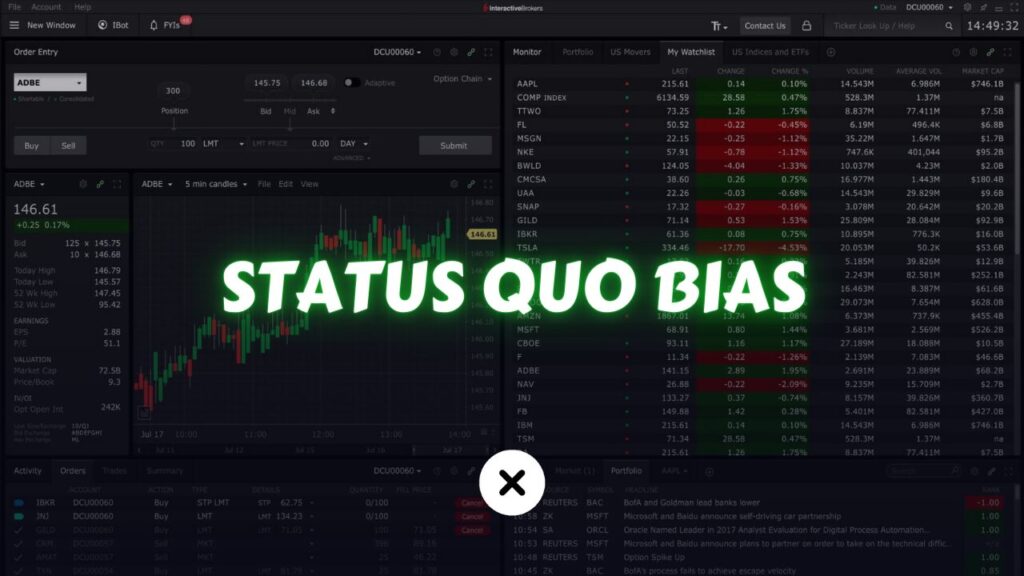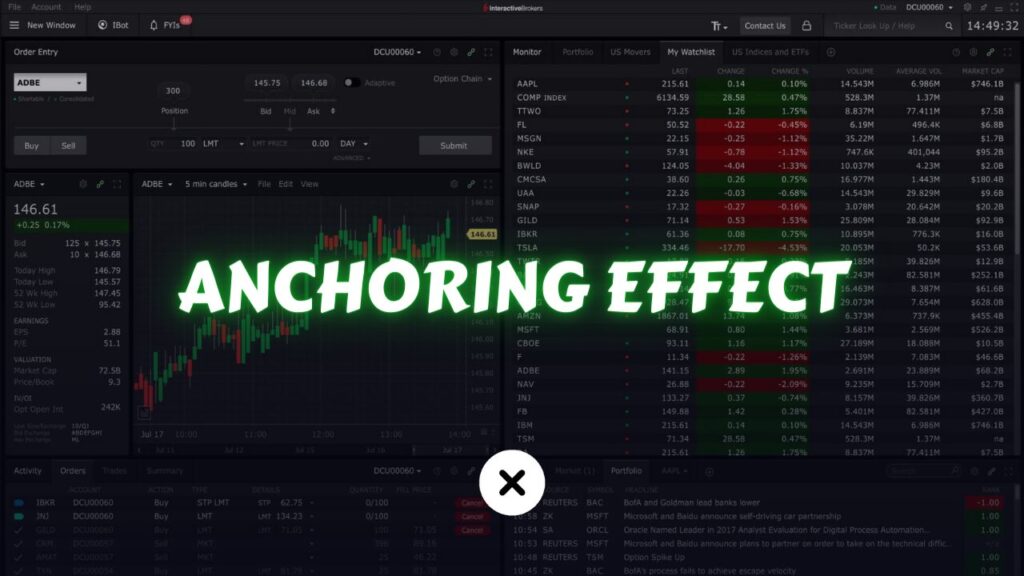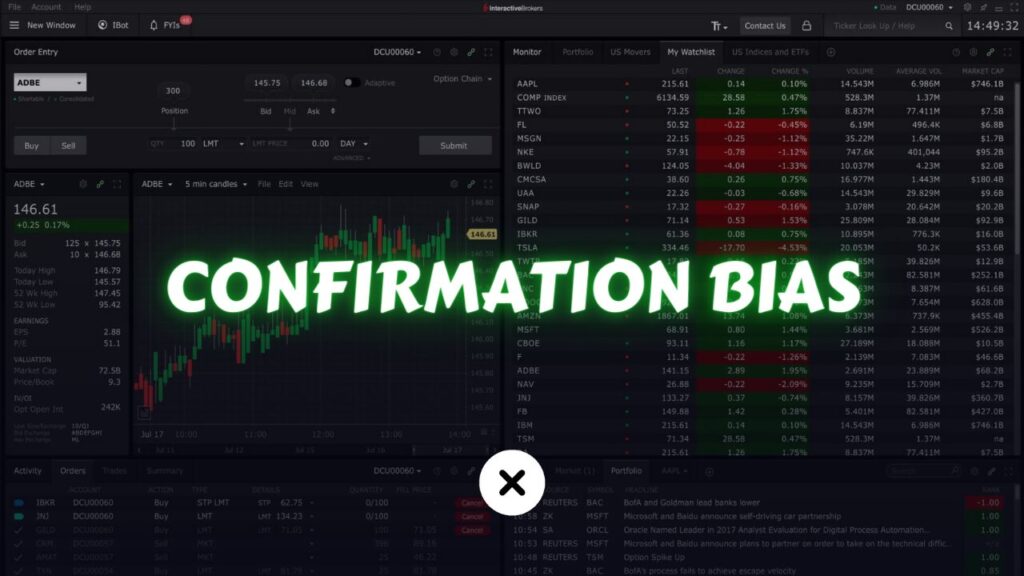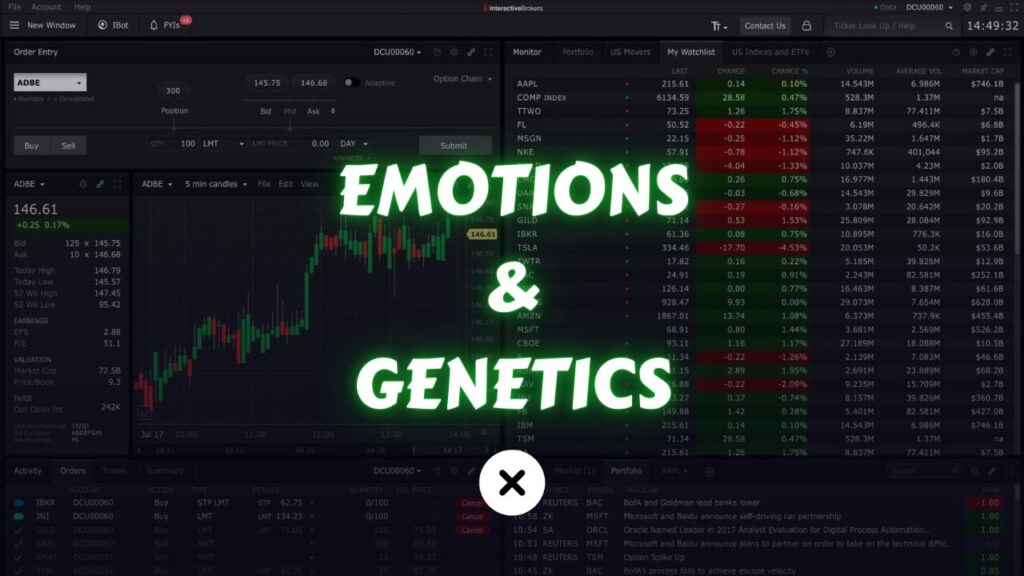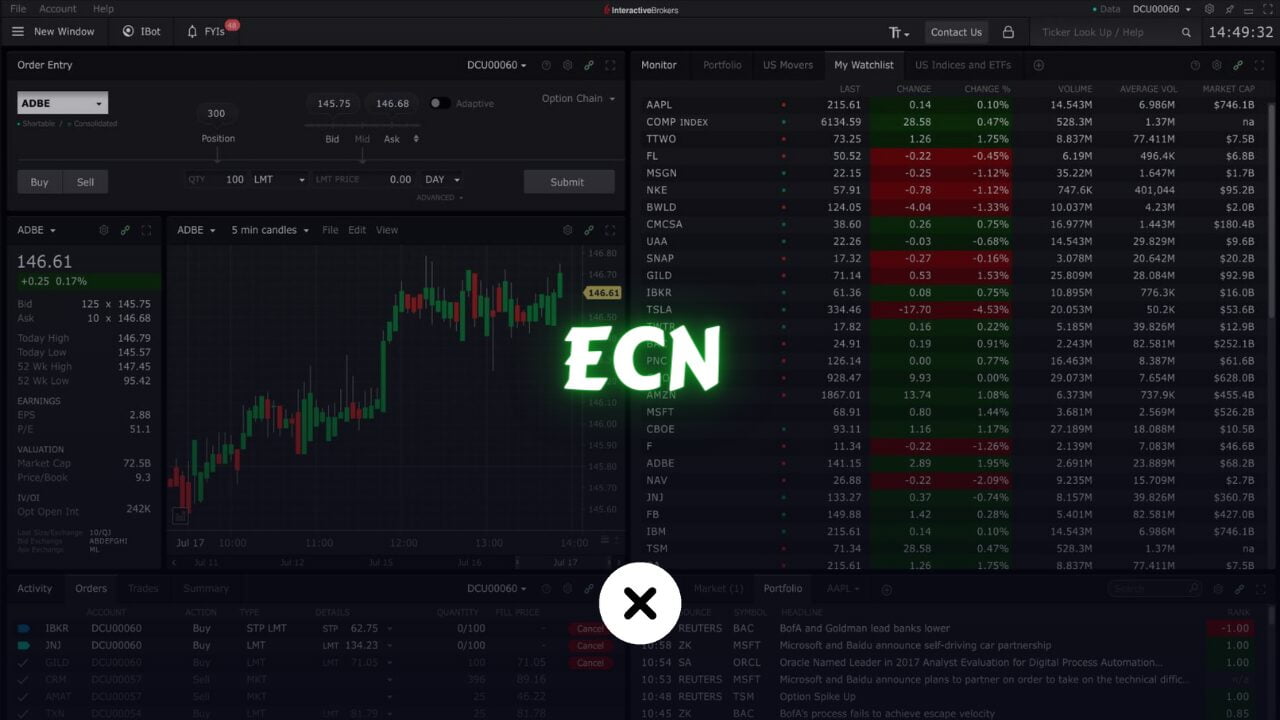
In the fast-paced world of financial markets, the Electronic Communication Network (ECN) stands as a pivotal mechanism facilitating seamless trading operations. Born out of technological advancements, ECNs have revolutionized the landscape of trading, offering transparency, efficiency, and accessibility to traders worldwide. This article delves into the intricacies of ECNs, exploring their functions, features, and significance in contemporary finance.
What is Electronic Communication Network or ECN?
An Electronic Communication Network (ECN) is a digital platform that enables direct interaction between different market participants, including institutional investors, retail traders, banks, and brokerages. Essentially, it serves as an electronic marketplace where buyers and sellers come together to execute trades without the need for intermediaries such as market makers.
Key Features of ECNs
Direct Market Access (DMA): One of the defining characteristics of ECNs is DMA, which allows traders to interact directly with the order books of various liquidity providers. This direct access ensures transparency in pricing and enables faster execution of trades.
Order Matching: ECNs employ sophisticated algorithms to match buy and sell orders from different participants based on price, quantity, and other specified parameters. This automated process ensures efficient trade execution and minimizes the impact of human intervention.
Depth of Market (DOM): ECNs provide traders with access to the depth of market data, allowing them to view the current bid and ask prices, as well as the volume of orders at each price level. This information empowers traders to make informed decisions based on market liquidity and sentiment.
Anonymous Trading: ECNs offer anonymity to traders by masking their identities during the order matching process. This anonymity fosters a level playing field and prevents any potential bias or discrimination based on the trader’s profile.
Low Latency: In the realm of high-frequency trading (HFT), speed is paramount. ECNs are engineered to deliver ultra-low latency, ensuring that orders are executed swiftly to capitalize on fleeting market opportunities.
Types of ECNs
Retail ECNs: These platforms cater to individual traders and retail investors, providing them with access to the interbank forex market, equities, commodities, and other financial instruments.
Institutional ECNs: Designed for institutional investors, hedge funds, and proprietary trading firms, institutional ECNs offer advanced trading features, deeper liquidity, and customizable execution options.
Dark Pools: While not strictly classified as ECNs, dark pools operate on similar principles by matching large block orders away from public exchanges. These private trading venues provide anonymity and reduced market impact for institutional traders.
Benefits of ECNs
Enhanced Liquidity: By aggregating liquidity from multiple sources, ECNs offer deeper liquidity pools, reducing the bid-ask spread and slippage for traders.
Transparency: ECNs provide real-time access to market data, including price quotes and order book information, fostering transparency and fair market practices.
Cost Efficiency: ECNs typically charge lower transaction costs compared to traditional brokerage services, making them an attractive option for high-volume traders.
Global Reach: With the advent of electronic trading, ECNs have facilitated cross-border transactions, enabling traders to access markets around the globe without geographical constraints.
Price Improvement: Through competitive bid matching and price aggregation, ECNs often result in price improvement for traders, leading to better execution prices than those available on conventional exchanges.
History of ECNs
Previously, we discussed the significance of market making as the foundation of trading, and I mentioned that it has been replaced by high-frequency traders.
To gain a comprehensive understanding of this transformation, it is crucial to familiarize yourself with the functioning and history of stock exchanges.
As market makers primarily aim to generate profits for themselves, their ability to perform optimally as market makers, ensuring a seamless market, may be compromised.
They establish a market for a particular stock based on their assessment that it is advantageous for them to buy, assuming the stock will experience minimal fluctuations. However, during periods of potential market volatility, they tend to widen the bid and ask prices to mitigate their exposure to risk.
Let’s take an example to illustrate this point. Suppose the bid price for a stock is $10, and the ask price is $11. When market makers believe that the market will remain relatively stable, they may choose to buy at the bid price of $10 and sell at the ask price of $11.
However, if they anticipate significant market volatility, they will adjust their strategy by placing their orders at a more distant price level. Instead of buying at $10, they might opt to buy at a lower price, such as $8. As a result, they do not actively participate at the bid price because it carries higher risks for them in such volatile market conditions.
Their primary objective is to maximize their profits rather than ensuring a fair market.
During the 1980s, market makers were among the wealthiest individuals in the industry. However, in recent times, high-frequency traders have completely taken over this role, leading to a significant decline in the earning potential of market makers.
What led to this transformation? Market makers engaged in various practices during that time that were met with disapproval. One such practice was sending orders with significantly wider spreads, causing dissatisfaction among traders. Moreover, delays were common in the exchange process, resulting in a lag between order placement and execution.
INET
These circumstances prompted Jerome Pustilnik, an individual, to envision an alternative to traditional exchanges. He sought to establish his own exchange that would be entirely automated, eliminating the need for market makers.
His concept revolved around enabling institutions to trade without physically going to the exchange. For large institutional investors, he proposed the idea of conducting substantial block trades off the exchange’s records, with the requirement to disclose these trades to the exchange afterward.
He established a computerized automation system that interconnected all participating institutions. Instead of submitting their orders to exchanges like the New York Stock Exchange or NASDAQ, institutions could post their orders on this network and directly trade with one another.
This approach bypassed the involvement of market makers and offered faster execution times due to the superior speed of his automated system. This innovative concept, introduced in 1967, came to be known as an Electronic Communication Network (ECN).
You can read more about this at Instinet.
Through his innovative approach, Jerome Pustilnik established his own order book, which he named “INET.” but this was only for institutions, retail traders cannot trade here.
The challenge with this was that if traders had the option to choose between the established New York Stock Exchange and the newly introduced INET, it was unlikely that they would prefer the latter. Since INET lacked sufficient market participants, people were hesitant to place orders there because of the absence of a substantial trading community.
However, a significant turning point occurred during Black Monday, the market crash of 1987 when the stock market plummeted by 22.6% in a single day. On that fateful day, people were frantically calling their brokers to sell their stocks, but the brokers were overwhelmed and unable to handle the high volume of calls. Consequently, many investors found themselves unable to execute their sell orders due to the brokers’ unresponsiveness and lack of information about the market conditions.
During this chaotic period, trading activity came to a standstill on the traditional exchanges. Market makers, whose role was to facilitate trading, canceled their orders and refrained from trading as uncertainty loomed. However, an interesting phenomenon unfolded on INET. Since INET operated on an automated system, trading continued uninterrupted despite the market turmoil. Institutions recognized the advantage of trading on INET, as there were active trades happening even when the NYSE and NASDAQ were at a standstill.
This extraordinary circumstance sparked interest in INET and prompted more institutions to divert their orders to the platform. The reliable trading activity on INET during the market crisis attracted participants and gradually drew more people away from the traditional exchanges.
However, despite the growing interest in INET, it was still not sufficient to completely shift the tide. However, another significant event occurred in 1994.
Two economists analyzed the bids and offers of numerous market makers and concluded that it was mathematically infeasible for all these market makers to be submitting their bids and offers at identical prices. As a result, they discovered evidence of collusion among the market makers, indicating that they were coordinating with one another to increase the spread of stock prices, thus maximizing their potential profits.
It is akin to a scenario where all the grocery stores in a particular state communicate with one another and agree to raise the price of baby formula, knowing that people have no choice but to purchase it, thereby increasing their profits. Such an act is illegal. The market makers engaged in a similar practice by widening the spread of stock prices in order to maximize their financial gains.
The studies conducted by the two economists were irrefutable, leading them to file a lawsuit against NASDAQ. As a result of the legal action, NASDAQ reached a settlement which included a provision requiring them to grant ECNs (Electronic Communication Networks) such as INET the ability to function as exchanges. This meant that regular retail investors like us could now purchase stocks from ECNs if we desired to do so. Given the loss of trust in NYSE and NASDAQ, we were also given the option to make purchases on ECNs like INET.
Many individuals began flocking to INET, but a significant number of people still remained at NYSE and NASDAQ. With the rising popularity of INET, more individuals expressed interest in establishing their own ECNs.
ARCA
One of the largest ECNs that emerged during this time was ARCA, which played a pivotal role in revolutionizing the concept of ECNs.
The name “ARCA” for the ECN was derived from the term “archipelago,” which refers to a series of interconnected islands. The creators of ARCA, Stuart Townsend and his team, chose this name to symbolize the interconnectedness of the various liquidity pools and markets within the ECN. It represents the idea that ARCA, as an ECN, provides a platform where different market participants can come together and trade seamlessly.
ARCA, which was developed by Stuart Townsend in 1994 and began accepting orders in 1997, emerged relatively recently, just over 20 years ago. It is important to highlight that the majority of trading volume occurs across a diverse range of ECNs, rather than being concentrated solely on NYSE and NASDAQ.
When Stuart Townsend entered the market to compete with other ECNs, he faced the challenge of attracting traders to his newly established ECN called ARCA. Given the presence of two major players in the market, he pondered why anyone would choose to trade on his platform.
To address this, he devised a unique idea: incentivizing traders who added liquidity to his ECN. Adding liquidity refers to adopting a passive approach in trading. Unlike NYSE and INET, which charged a flat fee of $1 per thousand shares regardless of whether liquidity was added or removed, Townsend’s concept aimed to reward those who contributed liquidity.
For Example
He decided to offer a reward of $2 to individuals who added liquidity on ARCA. In comparison, if you made a purchase at $10 on NYSE or INET, you would be charged $1 as a commission. However, if you made the same purchase on ARCA, you would receive a $2 reward. Consequently, a significant shift occurred as a result of this strategy. Everyone who wished to buy stocks on these ECNs opted to trade on ARCA instead because they were being incentivized. Consequently, liquidity began to flow from exchanges and other ECNs towards ARCA.
ARCA managed to sustain the $2 reward for adding liquidity by implementing a $3 fee for those who removed liquidity from the ECN. While one might assume that traders would prefer to remove liquidity elsewhere, it was not the case. At that time, ARCA was the only ECN with substantial liquidity available. As a result, traders had no choice but to remove liquidity from ARCA, compelling them to place all their orders on the platform. This concept was truly groundbreaking and revolutionary.
ARCA was the pioneering ECN to introduce this innovative pricing model. Interestingly, once ARCA implemented this approach, both INET and NYSE promptly adopted and replicated ARCA’s pricing scheme.
Over time, numerous ECNs emerged, each with its own distinct pricing scheme. The main issue with NASDAQ and NYSE was that their order matching algorithms were not as efficient or effective as those implemented by these new ECNs.
ARCA and INET, both developed by exceptionally skilled individuals passionate about innovative solutions, excelled in this aspect. They were capable of seamlessly handling millions of incoming and outgoing orders at incredibly high speeds. Consequently, NASDAQ acquired INET in 2005, while NYSE acquired ARCA in 2006. This acquisition took place just over a decade ago, which is relatively recent.
This is why their websites now feature the name “NYSE Arca.”
ECN Fees Structure
Presently, there is a wide array of ECNs to choose from, ranging from 50 to 100 or more. Each ECN offers its own unique pricing scheme. If you trade with Interactive Brokers, you can find a list of available ECNs. It’s important to note that while some brokers allow you to select your preferred ECN, others may not offer this flexibility. Among the most commonly used and highly regarded ECNs are ARCA, which continues to be one of the best options to date, as well as NYSE, NASDAQ, BYX, EDGEA, and BATS.
Take a look at those links to explore the pricing schemes of different ECNs. Upon examination, you’ll notice that while some ECNs pay you for adding liquidity and charge you for removing it, there are others that follow the opposite approach. why is that?
To help you better understand, the presence of multiple ECNs has transformed the trading landscape. When you examine the Level II or order book of NYSE, it no longer exclusively displays prices from NYSE alone. Instead, it shows prices from all ECNs participating in NYSE’s order book.
For example, if someone posts a bid of 1000 shares for $10 on INET, INET is obliged to inform NYSE about it. NYSE then includes this order in its own order book and discloses that it originates from INET. Similarly, if someone places an order for 5000 shares at $10 on ARCA, ARCA notifies NYSE, which incorporates the order into its order book and identifies it as originating from ARCA. Consequently, you no longer need to visit each individual ECN to access bid and ask orders. By referring to NYSE’s order book, you can conveniently view all the orders from both ECNs and NYSE itself.
When examining the fee structures of different ECNs, you’ll notice that some ECNs charge fees for adding liquidity. For instance, suppose someone intends to buy 1000 shares at $10 on BYX. Their order will be displayed on NYSE. According to the fee scheme, if you add liquidity to BYX, you will be charged $1.80. On the other hand, if you add liquidity on ARCA or BATS, you will receive $2. So, why would you choose BYX and incur charges when you could opt for platforms like ARCA or BATS and earn money? The answer lies in considering the fees from the perspective of the counterparty. If someone goes to BYX and removes liquidity, they will be paid to do so.
For example
If you’re a seller looking to sell your shares at $10 and there are potential buyers on BATS, ARCA, and BYX, as an aggressive seller, your priority would be to choose the buyer who offers the highest financial benefit. When considering the fee structures, both BATS and ARCA charge $3 for removing liquidity, while BYX actually pays $1.50 for removing liquidity. This makes BYX an attractive option for those looking to remove liquidity or sell aggressively.
By choosing BYX, you have the advantage of being filled ahead of others at the same price on ARCA and BATS. This is because BYX operates efficiently by incentivizing those who remove liquidity, even though you incur charges for adding liquidity. Ultimately, the benefit of getting filled faster outweighs the cost of adding liquidity.
If your primary goal is to secure a position quickly and bypass the queue, opting for an ECN that charges fees would be the way to go.
Contrary to what was previously discussed, NBBO (National Best Bid and Offer) differs from LEVEL I data. Each ECN has its own Level I data, and if an ECN does not align with the bids and offers of others, trading is restricted in that ECN. Instead, trading must take place based on the National Best Bid and Offer, which represents the best bid and offer available across any ECN or the entire market.
Once the bids and offers of ECNs such as ARCA, BYX, and BATS align and fall within the NBBO, you are free to choose any of these ECNs for trading, as they all provide options that adhere to the National Best Bid and Offer.
As we discussed previously, time and price priority are crucial in order books. It’s important to note that each ECN has its own order book, which is integrated into the main NYSE order book. Consequently, even if you arrived at a specific price later than others, certain ECNs may execute your order ahead of those who arrived earlier at the same price.
Each ECN functions as a queue or waiting line, where you have the flexibility to choose the specific ECN where you prefer to wait. It’s important to note that the speed of movement within each ECN can vary, with some operating at a slower pace while others work more efficiently and quickly.
Therefore, when considering your options, you must decide whether you prioritize faster execution or the advantage of fees. Your choice of ECN should align with your preferred criterion.
Conclusion
Electronic Communication Networks (ECNs) have transformed the world of financial trading, offering transparency, efficiency, and accessibility to traders worldwide. By enabling direct interaction between market participants and automating order matching processes, ECNs have revolutionized trading, providing benefits such as enhanced liquidity, transparency, and cost efficiency. From their inception to the present day, ECNs have evolved significantly, shaping the dynamics of modern financial markets. With the emergence of innovative pricing models and increased competition among ECNs, traders now have a diverse range of options to choose from, each catering to their specific trading preferences. As technology continues to advance, ECNs are poised to play an increasingly vital role in shaping the future of global finance.
